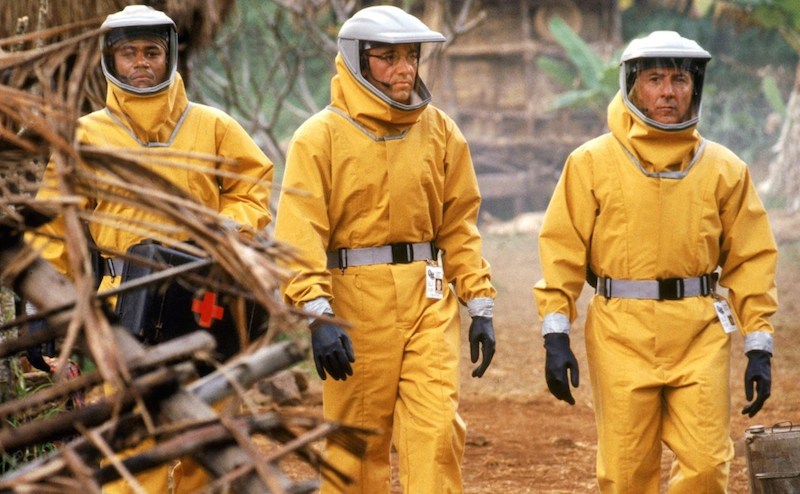Recent widespread rumors that the Wuhan coronavirus is an escaped bioweapon are irresponsible alarmism unsupported by the underlying facts. While blowback from bioweapon development leading to disease outbreaks is a staple of plague fiction, from 1971’s The Andromeda Strain, to 1995’s Outbreak, to the recent Planet of the Apes films, it’s extremely unlikely that is the case here.
Despite the location of China’s premier virology institute and only BSL-4 virology laboratory within 20 miles of the outbreak’s origin, the evidence so far points overwhelmingly to yet another coronavirus outbreak of animal origin, most similar to the SARS outbreak 17 years ago.
In responsible circles, the current theory about the virus’s origin is that it was very similar to the origin of SARS: an endemic coronavirus in bats spread through an intermediary wild animal sold as food in an exotic meat market in China. The initial cases of the Wuhan strain were all confined to vendors and customers from a small number of nearby stalls in the Huanan Seafood Market in Wuhan, where exotic meat was sold with few or no safety precautions.
It’s unknown what intermediary transmitted the Wuhan strain, but direct transmission from bats is considered unlikely. The WHO has been receiving primary clinical information — i.e. the raw patient data and samples — from the Chinese medical authorities, and cases have been tracked inside Wuhan by evaluating their connection to the fish market.
After the virus’s genome was sequenced, a rapid analysis of codon frequencies (the tendency of the virus’s genome to use different options for three-letter RNA sequences that spell the same amino acid in the cell’s genetic code) suggested that venomous snakes were a possible reservoir source. Viruses often evolve to mimic the codon frequencies of their host organisms, because they use host tRNAs to replicate, and the tRNA libraries of each host are optimized to translate the host’s codon frequencies. This creates an evolutionary pressure to mimic the host’s codon distribution. Venomous snakes are sold as food in the Huanan market, possibly suggesting direct transmission.
However, this theory has been largely cast aside as sequence alignment to all known animal coronaviruses has revealed a 96% alignment with an endemic bat coronavirus [PDF]. Although bats are sometimes sold as food in China, current scholarly thinking is aligning on the notion of an intermediary host — i.e. the virus jumped from bats to some other animal, then to humans — although it’s not clear which one.
All of this information linking the virus to bats and suggesting an intermediary host has been directly confirmed by laboratories independent of the Chinese government.
So in order to believe the Wuhan virus is a bioweapon, you’d have to believe that the Chinese government engineered a coronavirus by starting with an exotic wild strain instead of a strain known to infect humans. Then you also have to believe they either intentionally released it in the exact time, place, and manner that would be most suggestive of a wild origin (i.e. in a seafood market), or they falsified all the clinical data on early cases to suggest a fish market origin that was not real. In other words, you’d have to believe in a massive and extremely competent conspiracy, aimed at covering up the release of a bioweapon based on a very unlikely strain of virus.
Such theories, like coronaviruses themselves, shouldn’t be allowed to spread unchecked.
Be prepared. Don’t be a victim.
Want more great content and giveaways? Sign up for The Prepared’s free newsletter and get the best prepping content straight to your inbox. 1-2 emails a month, 0% spam.


You are reporting the comment """ by on